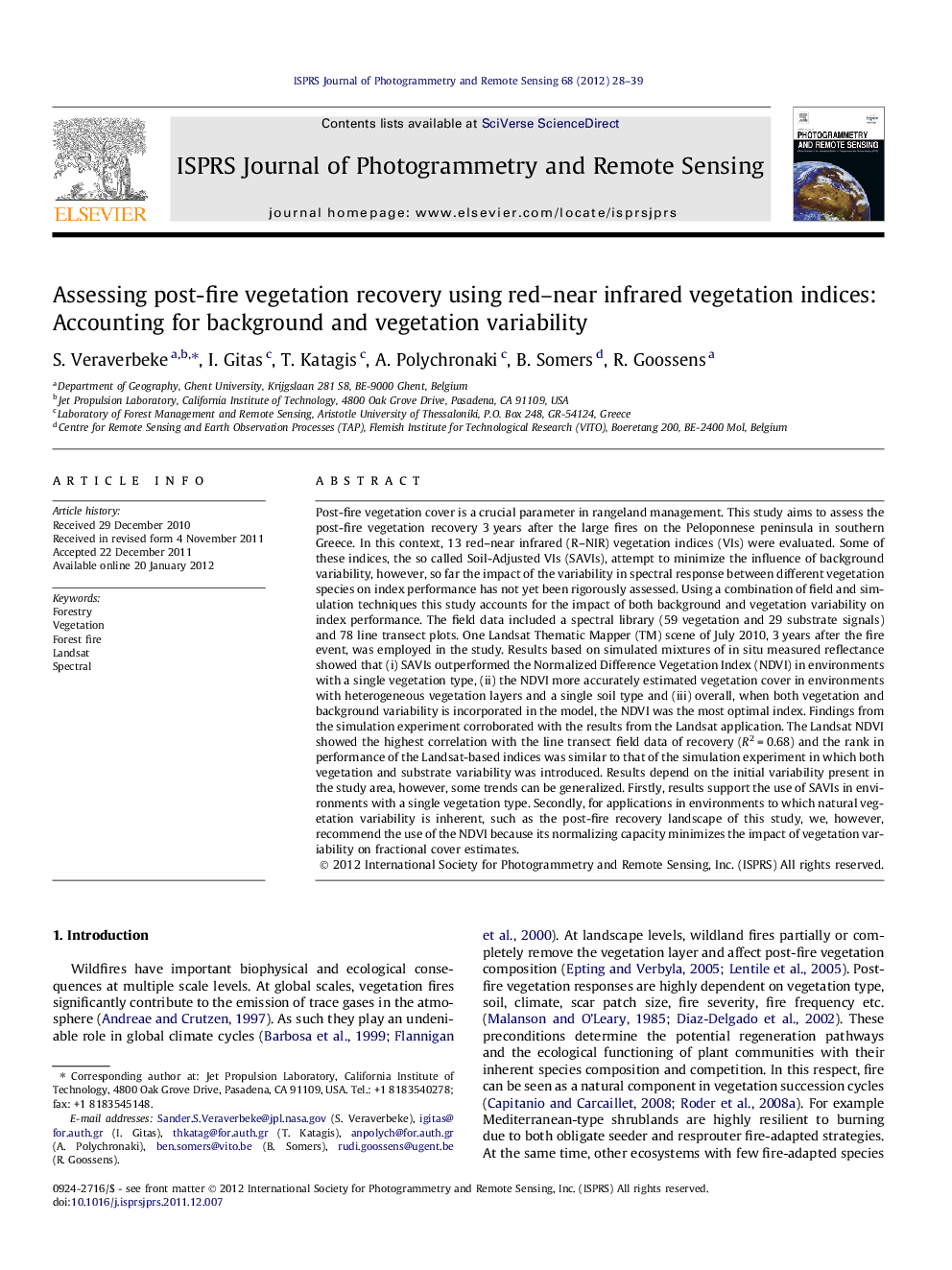| کد مقاله | کد نشریه | سال انتشار | مقاله انگلیسی | نسخه تمام متن |
|---|---|---|---|---|
| 555806 | 1451306 | 2012 | 12 صفحه PDF | دانلود رایگان |

Post-fire vegetation cover is a crucial parameter in rangeland management. This study aims to assess the post-fire vegetation recovery 3 years after the large fires on the Peloponnese peninsula in southern Greece. In this context, 13 red–near infrared (R–NIR) vegetation indices (VIs) were evaluated. Some of these indices, the so called Soil-Adjusted VIs (SAVIs), attempt to minimize the influence of background variability, however, so far the impact of the variability in spectral response between different vegetation species on index performance has not yet been rigorously assessed. Using a combination of field and simulation techniques this study accounts for the impact of both background and vegetation variability on index performance. The field data included a spectral library (59 vegetation and 29 substrate signals) and 78 line transect plots. One Landsat Thematic Mapper (TM) scene of July 2010, 3 years after the fire event, was employed in the study. Results based on simulated mixtures of in situ measured reflectance showed that (i) SAVIs outperformed the Normalized Difference Vegetation Index (NDVI) in environments with a single vegetation type, (ii) the NDVI more accurately estimated vegetation cover in environments with heterogeneous vegetation layers and a single soil type and (iii) overall, when both vegetation and background variability is incorporated in the model, the NDVI was the most optimal index. Findings from the simulation experiment corroborated with the results from the Landsat application. The Landsat NDVI showed the highest correlation with the line transect field data of recovery (R2 = 0.68) and the rank in performance of the Landsat-based indices was similar to that of the simulation experiment in which both vegetation and substrate variability was introduced. Results depend on the initial variability present in the study area, however, some trends can be generalized. Firstly, results support the use of SAVIs in environments with a single vegetation type. Secondly, for applications in environments to which natural vegetation variability is inherent, such as the post-fire recovery landscape of this study, we, however, recommend the use of the NDVI because its normalizing capacity minimizes the impact of vegetation variability on fractional cover estimates.
Journal: ISPRS Journal of Photogrammetry and Remote Sensing - Volume 68, March 2012, Pages 28–39